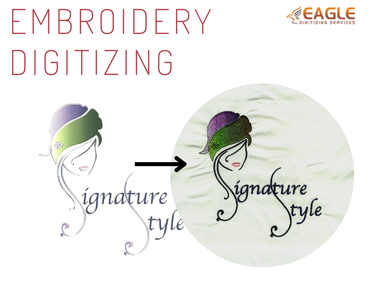Is Vector Art Suitable for Formal Business Presentations?
In the realm of business presentations, visuals serve as a critical tool for conveying complex information clearly and persuasively. From enhancing data clarity to reinforcing branding, the right visuals can make a significant impact. Vector art, with its precision and versatility, is particularly suited for formal business settings. This article explores how vector art can be effectively integrated into business presentations to elevate their professional quality.
Choosing the Right Vector Art for Business
Selecting Professional and Relevant Graphics
When incorporating vector art into business presentations, it's essential to choose graphics that align with your professional objectives. Opt for designs that reflect the subject matter and maintain a polished, business-like appearance. Avoid overly decorative or whimsical elements that may detract from the presentation's seriousness.
Ensuring Brand Consistency
Consistency is key to reinforcing brand identity. Select vector art that matches your company's color scheme, typography, and overall aesthetic. This alignment helps create a unified visual experience and strengthens brand recognition among your audience.
Avoiding Overly Complex or Decorative Art
While vector art is highly versatile, it's important to avoid overly complex designs that may overwhelm your audience. Stick to simple, clear graphics that enhance your message without distracting from the content. Aim for a mix of visual appeal and clarity.
Incorporating Vector Art into Presentation Slides
Using Vector Art for Infographics
Infographics benefit greatly from vector art due to its ability to display data clearly and attractively. Utilize vector graphics to create informative and engaging infographics that simplify complex information and capture your audience's attention.
Enhancing Charts and Graphs with Vector Graphics
Vector graphics can significantly improve the appearance of charts and graphs. Use vector elements to ensure that your data visualizations are sharp, easy to read, and professionally presented. This enhancement can make data more accessible and impactful.
Creating Custom Icons and Illustrations
Custom vector icons and illustrations can add a unique touch to your presentation. Design or select vector graphics that align with your presentation's theme and content. Custom elements can help illustrate key points and make your slides stand out.
Designing with Vector Art
Maintaining a Clean and Professional Aesthetic
Keep your presentation design clean and professional by using vector art judiciously. Ensure that graphics enhance rather than clutter your slides. A minimalist approach often works best, allowing your content to remain the focal point.
Balancing Text and Visuals
The appropriate balance of text and graphics is critical. Use vector art to complement and reinforce your textual content, not to overshadow it. Effective presentations integrate visuals that support and enhance the message, rather than competing with it.
Choosing Appropriate Colors and Styles
Select colors and styles that fit the overall tone and branding of your presentation. Vector art allows for precise color matching and customization, ensuring that your visuals align with your company's color palette and visual identity.
Examples of Effective Use of Vector Art
Case Studies of Successful Business Presentations
Examine case studies where vector art has been used effectively in business presentations. Analyze how these examples incorporate graphics to support their messages and achieve their objectives.
Analyzing High-Impact Vector Art in Corporate Settings
Review high-impact vector art used in corporate settings to understand its role in enhancing presentations. Note the design principles and strategies employed to create visually compelling and informative slides.
Learning from Industry Leaders and Experts
Study presentations by industry leaders and design experts to gain insights into the effective use of vector art. Learning from established practices can provide valuable guidance for your own presentations.
Technical Considerations
Compatibility with Presentation Software
Ensure that your vector art is compatible with the presentation software you are using. Most modern software supports common vector formats like SVG and EPS, but it's important to verify compatibility to avoid any issues.
File Formats and Resolution Requirements
Understand the file formats and resolution requirements for your vector art. Choose formats that maintain quality and are suitable for your presentation needs, whether digital or print.
Managing Vector Art in Different Slide Layouts
Adapt your vector art to fit various slide layouts and formats. Ensure that graphics are appropriately sized and positioned for different screen sizes and orientations.
Best Practices for Integrating Vector Art
Ensuring Readability and Clarity
Prioritize readability and clarity when integrating vector art into your presentation. Ensure that all text and data are legible and that graphics contribute to, rather than detract from, the overall message.
Aligning Graphics with Presentation Objectives
Align your vector art with the objectives of your presentation. Graphics should support and enhance your key points, helping to illustrate and reinforce your main messages.
Using Vector Art to Highlight Key Points
Leverage vector art to highlight key points and emphasize important information. Effective use of visuals can draw attention to critical elements and aid in audience comprehension.
Common Pitfalls and How to Avoid Them
Overloading Slides with Graphics
Avoid overloading slides with too many graphics. Excessive visuals can clutter your presentation and detract from the main message. Use vector art strategically to enhance, not overwhelm.
Misusing Art in a Professional Context
Ensure that vector art is used appropriately in a professional context. Avoid designs that may appear too casual or out of place. Maintain a focus on professionalism and relevance.
Ensuring Art Complements Rather Than Distracts
Ensure that your vector art complements your presentation rather than distracting from it. Graphics should enhance your content and support your message, not divert attention away from it.
Tips for Customizing Vector Art
Modifying Graphics to Fit Your Brand
Customize vector art to align with your brand's visual identity. Adjust colors, styles, and elements to ensure that the graphics reflect your company's branding and messaging.
Adjusting Colors and Sizes
Modify the colors and sizes of vector graphics to suit your presentation's needs. Ensure that adjustments maintain visual harmony and do not compromise the quality or effectiveness of the graphics.
Combining Multiple Vector Elements
Combine multiple vector elements to create cohesive and visually appealing graphics. Use layering and grouping techniques to integrate different elements seamlessly.
Creating Your Vector Art
Tools and Software for Designing Vector Art
Explore tools and software options for designing your own vector art. Programs like Adobe Illustrator, Affinity Designer, and CorelDRAW offer powerful features for creating and customizing vector graphics.
Basic Techniques for Crafting Custom Graphics
Learn basic techniques for crafting custom vector graphics, including drawing shapes, using the pen tool, and applying colors and effects. These skills will help you create unique and tailored visuals for your presentations.
When to Seek Professional Design Assistance
Consider seeking professional design assistance for complex or high-stakes presentations. A graphic designer can provide expertise and ensure that your vector art meets the highest standards of quality and professionalism.
Legal and Ethical Considerations
Licensing Requirements for Vector Art
Understand the licensing requirements for vector art, especially if you are using purchased or third-party graphics. Ensure that you comply with licensing terms and conditions to avoid legal issues.
Avoiding Copyright Infringement
Avoid copyright infringement by using only authorized or original vector art. Verify that you have the right to use and modify any graphics you include in your presentations.
Proper Attribution for Purchased Graphics
Provide proper attribution for any purchased or sourced vector graphics. Acknowledge the creator or source as required by the licensing agreement.
Practical Examples and Templates
Pre-designed Templates with Vector Art
Utilize pre-designed templates that incorporate vector art to streamline your presentation creation process. These templates often include professional and high-quality graphics suited for business settings.
Customizable Templates for Business Presentations
Explore customizable templates that allow you to integrate vector art while maintaining flexibility. Adapt these templates to fit your specific needs and branding requirements.
Examples of Effective Vector Art Usage
Review examples of effective vector art usage in business presentations to gain inspiration and understand best practices. Observe how successful presentations integrate graphics to enhance their impact.
Adapting Vector Art for Different Presentation Formats
Preparing for Digital and Print Versions
Prepare your vector art for both digital and print versions of your presentation. Ensure that graphics are optimized for various formats and resolutions to maintain quality across different media.
Adjusting Art for Various Screen Sizes
Adapt vector art for different screen sizes and display resolutions. Test your graphics to ensure that they look sharp and professional on a range of devices.
Ensuring Compatibility Across Devices
Ensure that your vector art is compatible across different devices and platforms. Verify that your presentation maintains its visual integrity when viewed on various screens and operating systems.
Evaluating the Impact of Vector Art
Gathering Feedback from Audience Members
Gather feedback from audience members to evaluate the effectiveness of your vector art. Use their insights to assess how well the graphics support your presentation and identify areas for improvement.
Measuring Effectiveness in Achieving Presentation Goals
Measure the effectiveness of your vector art in achieving your presentation goals. Assess whether the graphics help convey your message clearly and enhance audience engagement.
Making Adjustments Based on Reactions
Make adjustments to your vector art based on audience reactions and feedback. Refine your graphics to better align with your presentation objectives and improve overall impact.
Resources for Vector Art
Where to Find High-Quality Vector Art
Explore sources for high-quality vector art, including stock graphic websites, design marketplaces, and creative communities. Access a wide range of graphics to suit your presentation needs.
Recommended Design Tools and Software
Consider using recommended design tools and software to work with vector art. Programs like Adobe Illustrator, Affinity Designer, and Inkscape offer robust features for creating and editing vector graphics.
Online Communities and Forums for Vector Design
Join online communities and forums dedicated to vector design to connect with other designers, share ideas, and seek advice. Engage with these communities to enhance your skills and stay updated on industry trends.
Vector art offers numerous benefits for business presentations, including scalability, high-quality data presentation, and versatility. By choosing the right graphics, maintaining a professional aesthetic, and following best practices, you can enhance the impact of your presentations and effectively communicate your message. Embrace vector art as a powerful tool to elevate your presentations and achieve your business goals.



